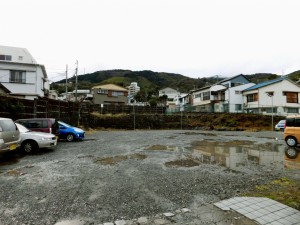On the way to Nagawa-machi, the issues of Japan’s aging population and depopulation of rural areas came to mind, as it has many times during this trip. These issues were only slightly familiar to me as I had seen articles and statistics demonstrating the demographic changes taking place in many developed countries, of which Japan appears to have the greatest possible decrease in population. Witnessing this change and efforts of revitalization made me think about not only the social implications of population decline, but the implications it can have on the landscape and how that is managed.
Population decline is something that has been dealt with in other countries, such as the example of the United States for the past few decades as many cities and rural communities became depopulated in favor of suburban developments. This left many landscapes of abandoned and leveled buildings that provided very little or no use for those remaining there. I am not very familiar with how abandoned buildings or homes are dealt with in Japan, but I do recall reading that it differs from the American model in that abandoned buildings must be maintained by the owners or remain in use in some manner.
Replacement of the population and occupation of land in an area is perhaps the most troubling and interesting when dealing with the issue in an environmental sense, as the Japanese landscape is so densely populated. Seeing relatively large empty spaces such as one in Ito being used as an unpaved parking lot was odd due to its central and vibrant location within the city and proximity to the beach. I do not know the reason this space was unoccupied and do not want to assume as to why, but I have noticed similar spaces in the smaller towns that we have visited. Unlike the abandoned spaces I have seen in some American towns, these appear to be isolated within the town and greatly contrast the colors and sounds of their surroundings.
What intrigues me the most about this is how the landscape of Japan as a whole will look like if further abandonment takes place and whether or not that may negatively or positively affect people and the environment. As this process is currently taking place, there are options in terms of possible management of unused spaces, some that may even provide benefits to those living near them. This is not to say that I believe that depopulation of certain areas is positive or negative but rather that if it is a trend in which reversion or stabilization prove to be unsuccessful, than it would be ideal for Japan to use depopulation of areas to reinvent their potentially blighted environments so that they may have a closer and more productive relationship surrounding environments.

Recent Comments